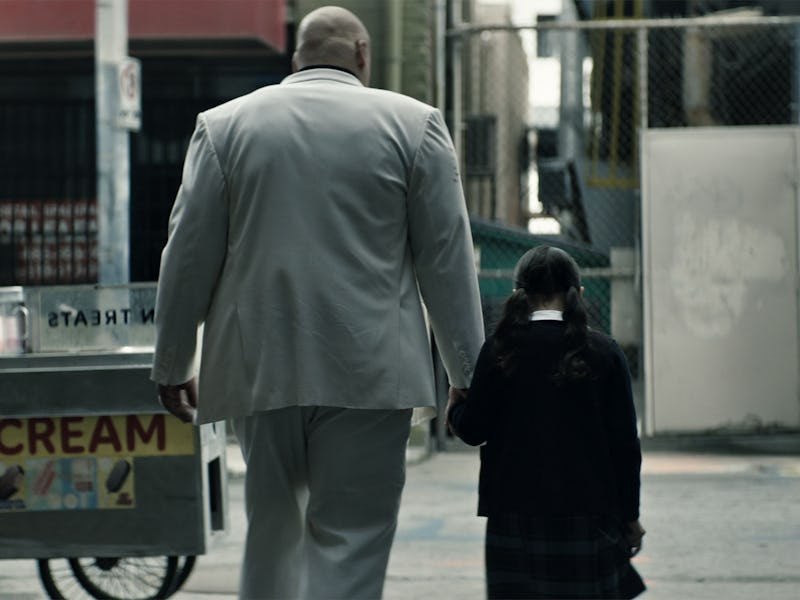Echo's Flashbacks Show Marvel's Most Underrated Strength
Nobody does a multi-generational story like Marvel.

Echo has one of the longest histories in the Marvel Cinematic Universe, and it’s one we see reverberate throughout the series. While flashbacks have always been a hallmark of the MCU, Echo takes the device to new heights, exploring Indigenous characters from chapters of Maya’s long lineage and making them an active part of her story. Through these flashbacks, which each follow a different powerful Choctaw woman through history — Chafa, Lowak, Tuklo, Taloa, and finally Maya — Echo highlights cultural elements of the Choctaw Nation that would otherwise go ignored.
Every episode of Echo opens with one of these flashbacks, which depict aspects of Indigenous history rarely seen on TV. And, like Ms. Marvel and its depiction of Partition before it, Echo’s highlighting of these aspects prove that Marvel is getting better and better at highlighting these underseen parts of history.
Spoilers for Echo follow.
Breaking Down Echo’s Flashbacks
According to Skully, Maya can trace her history back all the way to the “first Choctaw” — Chafa and her people.
The first episode of Echo begins with the origin of the Choctaw people themselves, as they emerge from Nanih Waiya, the cave we see Chafa lead her people out of. Nanih Waiya is an actual place, a platform mound created in ancient times in Winston County, Mississippi. The Choctaw people still consider this place sacred as part of their history and ancient culture, and now it’s officially part of MCU. Chafa, however, is a creation of Echo itself, a proud matriarch that proves strong Choctaw women like Maya Lopez have always been around, even back to the first Choctaw themselves.
The second episode, “Lowak,” is set in 1200 AD Alabama during a game of stickball, the brutal lacrosse-esque sport played throughout Choctaw history often as an alternative to war to settle disputes. In 1890, American anthropologist James Mooney described the rules of the game by saying, “Almost everything short of murder is allowable in the game.”
Lowak is shown playing the traditional game of ishtaboli, or stickball.
While the sport waned in popularity after a game in 1903 ended in a riot among spectators, it’s now an important part of preserving Choctaw culture. Now, a World Series of Stickball is held annually in Mississippi, and while women weren’t known to play stickball as they did in Echo, women’s leagues are now prevalent.
At the beginning of Echo Episode 3, we see a silent movie telling the story of the Lighthorse Men, the Choctaw police force, along with Tuklo, the female sharpshooter who saves the day in the end. But while Tuklo is a fictional creation, the “Lighthorse Men” was an actual group, a police force that was established within the “Five Civilized Tribes” of Native Americans, the label that was given to the Choctaw, Creek, Muscogee, Chickasaw, and Seminole tribes. In fact, it was the Lighthorse Men who were called to the stickball riot in 1903.
Tuklo’s introduction comes in the form of an era-appropriate silent movie.
Episode 4 is named after Taloa, Maya’s mother, but the flashback it opens with doesn’t feature her at all. Instead, we see Maya’s upbringing with Kingpin as an uncle as she learns to be a coldhearted killer like him. It may not feature Maya’s mother, but it shows how the loss of her mother has affected her life.
However, we do see Taloa in the flashback that starts Episode 5, showing a young Maya as she uses her slingshot to injure a woodpecker. She brings it to her mother, who teaches her about not harming living things and the importance of the woodpeckers in their culture. The sapsucker, or biskinik, was known as the “news bird.”
According to Taloa, “The Choctaw would tell the bird what to say, and it would tap out messages on the trees, warning when enemies approached.” This pays off later when Maya sees one of these birds, alerting her that her family is in trouble. In real life, the Choctaw Nation’s newspaper is named after this bird, honoring its reputation as an informant.
A Culturally Authentic Experience
Marvel put the spotlight on India’s Partition in Ms. Marvel, and continues to use their platform to highlight Indigenous stories in Echo.
Much like the previous Marvel show Ms. Marvel, historical flashbacks form a core part of the foundation of legacy and, in turn, superpowers. But Echo brings something new to the table: variety. Each of these flashbacks and characters works together to make up the four gifts Echo can access with her powers: Chafa’s strategy, Lowak’s cunning, Tuklo’s ferocity, and Taloa’s love.
But while the characters may be varied, the focus is still specific. Echo’s whole ethos in portraying Native American culture was focused on making Maya’s identity specific to one tribe. Representation is only as effective as it is accurate, and through each of these flashbacks we see an important part of Choctaw culture instead of a vague mishmash of Indigenous signifiers.
Indigenous culture is not a monolith, but neither is the Choctaw nation. Instead of painting Maya Lopez as the symbol of an entire people, we get to see the variety of strong women who came before her. Generations are echoing, and we get to hear what they say in their own words.